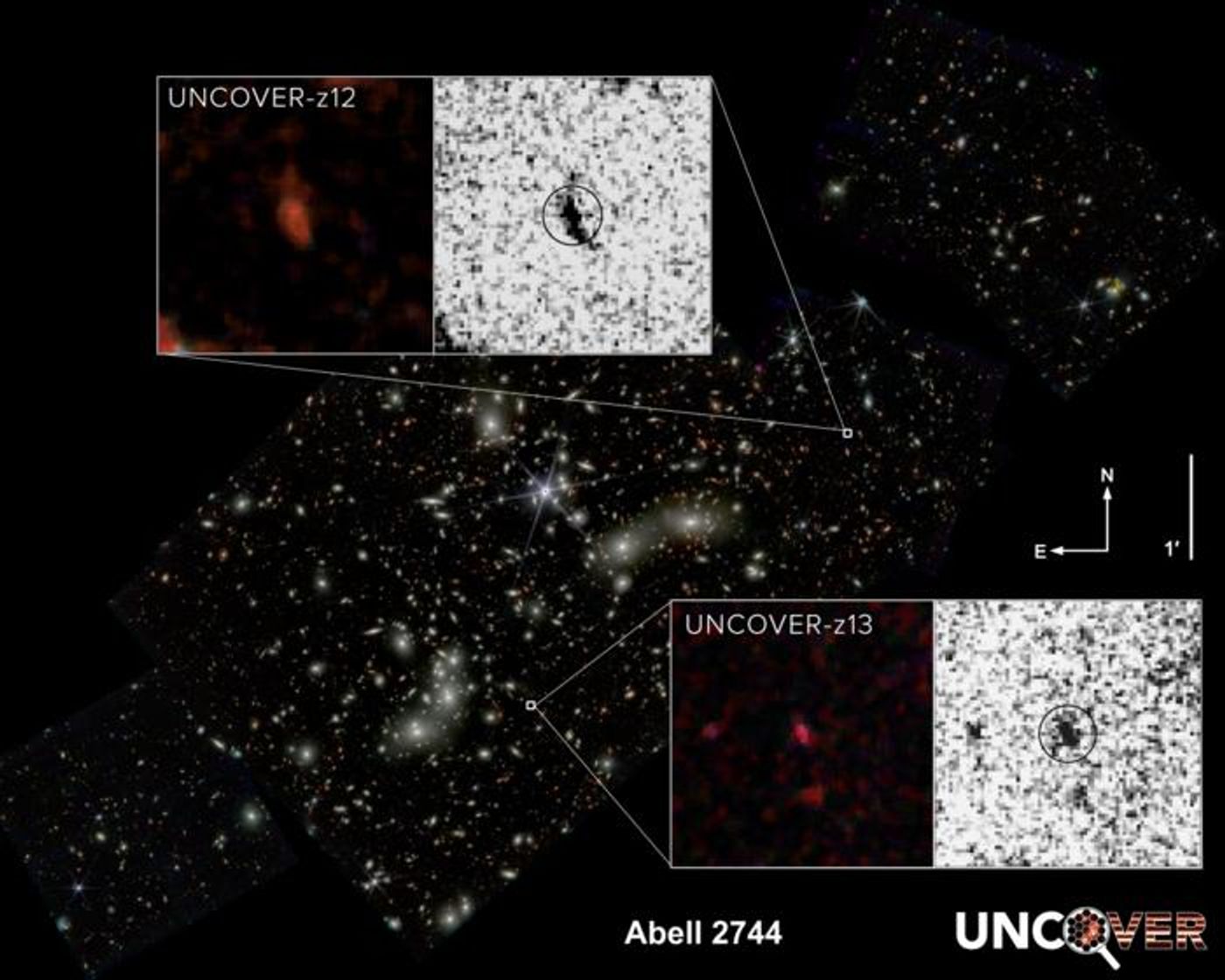Peanut and Fluffy Ball Galaxies: JWST Reveals Distant Marvels in Pandora's Cluster
A recent study published in Astrophysical Journal Letters discusses how new data from NASA’s James Webb Space Telescope (JWST) has identified the second- and fourth-farthest and oldest galaxies in the universe, which are located approximately 33 billion light years from Earth and part of Abell 2744, also known as Pandora’s Cluster. The reason the galaxies are estimated to be 33 billion light years from Earth is due to the expansion of the universe, but astronomers hypothesize the two were first formed approximately 330 million years after the Big Bang, which is incredibly young in cosmic terms.
The two galaxies are named UNCOVER z-12 and UNCOVER z-13 since they were discovered by the JWST UNCOVER (Ultradeep NIRSpec and NIRCam ObserVations before the Epoch of Reionization) team. This study was conducted by an international team of more than two dozen researchers, who refer to the two galaxies as appearing like a peanut and fluffy ball, and this study holds the potential to help scientists better understand the formation and evolution of the first galaxies after the Big Bang.
“Very little is known about the early universe, and the only way to learn about that time and to test our theories of early galaxy formation and growth is with these very distant galaxies,” said Dr. Bingjie Wang, who is a postdoctoral scholar in the Penn State Eberly College of Science and lead author of the study. “Prior to our analysis, we knew of only three galaxies confirmed at around this extreme distance. Studying these new galaxies and their properties has revealed the diversity of galaxies in the early universe and how much there is to be learned from them.”
The second- and fourth-farthest galaxies ever identified (UNCOVER z-13 and UNCOVER z-12) were recently confirmed using JWST’s Near-Infrared Camera (NIRCam), and the galaxies are located in Pandora’s Cluster (Abell 2744). (Credit: Cluster image: NASA, UNCOVER (Bezanson et al., DIO: 10.48550/arXiv.2212.04026); Insets: NASA, UNCOVER (Wang et al., 2023); Composition: Dani Zemba/Penn State)
For the study, the two galaxies were initially identified in one of JWST’s first deep field imaged obtained in 2022, and follow-up observations had to be conducted to confirm the findings. One of the galaxies is comparably smaller than our own Milky Way Galaxy at 2,000 light-years in diameter compared to 100,000 light-years in diameter.
However, the researchers still found this size surprising since the early universe is hypothesized to be compressed much more, so this should mean smaller galaxies should have existed. Additionally, the team utilized computer models to surmise the characteristics and activity within these two galaxies, to include identifying the low abundance of metals and that stars were actively forming and evolving rapidly.
“The first elements were forged in the cores of early stars through the process of fusion,” said Dr. Joel Leja, who is an assistant professor of astronomy and astrophysics at Penn State University and a co-author on the study. “It makes sense that these early galaxies don’t have heavy elements like metals because they were some of the first factories to build those heavy elements. And, of course, they would have to be young and star-forming to be the first galaxies, but confirming these properties is an important basic test of our models and helps confirm the whole paradigm of the Big Bang theory.”
What new discoveries will astronomers make about the earliest galaxies in the universe in the coming years and decades? Only time will tell, and this is why we science!
As always, keep doing science & keep looking up!
Sources: The Astrophysical Journal Letters, Wikipedia, EurekAlert!, Penn State University









